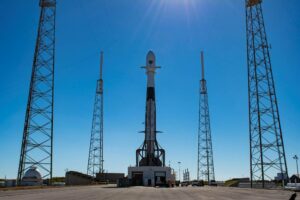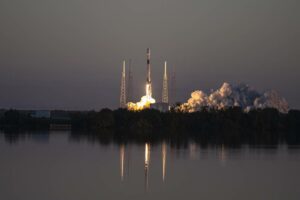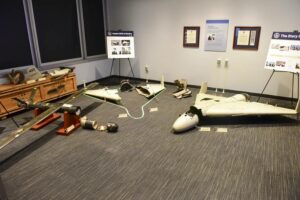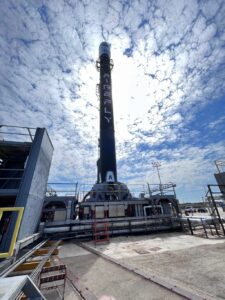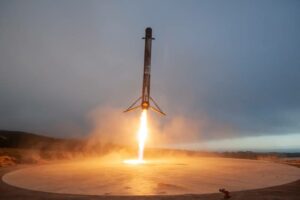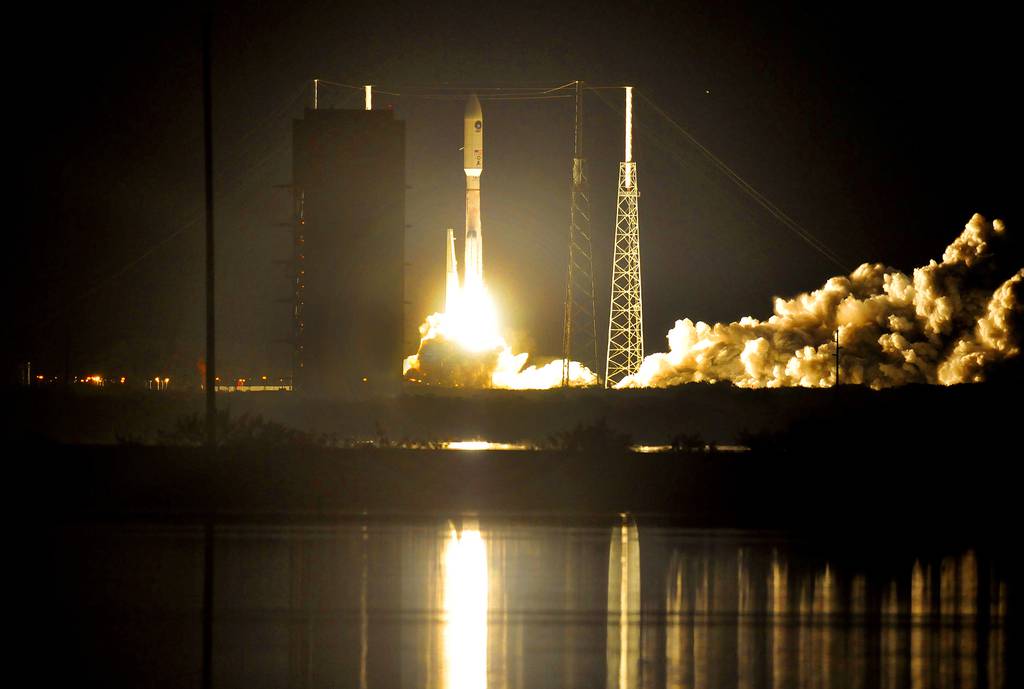
WASHINGTON — The Space Force selected Lockheed Martin and Boeing to design satellite prototypes for its Mobile User Objective System program, which provides secure narrowband communication for military operators.
Each company received a $66 million contract for early design and risk-reduction, according to a Jan. 25 Defense Department announcement. Following the first phase of the effort, which will run through July 2025, the Space Force will select a single company to build two satellites, the first of which it expects to launch before the end of fiscal 2030.
The Mobile User Objective Systems, or MUOS, satellites operate in a narrowband frequency range that makes them less vulnerable to bad weather or tricky terrain — factors that can affect a satellite’s performance. The range is also ideal for securely transmitting information.
MUOS satellites were built to replace the Ultra High Frequency Follow-on system, known as UFO. They feature two payloads — one to maintain the legacy UHF network and a second that provides a new Wideband Code Division Multiple Access capability. The system is designed to provide 10 times the capacity of its predecessor.
The service has four MUOS satellites in orbit, plus one spare, all built by Lockheed Martin. The two satellites will join that constellation, extending operations into the 2030s. Lockheed, Boeing and Northrop Grumman participated in a series of studies that considered options for keeping the system active.
While the Space Force hasn’t said what capabilities the additional satellites will provide, officials have said the service is prioritizing resilience in these near-term upgrades. Earlier MUOS spacecraft weren’t designed to resist cyber threats and enemy jamming.
In the meantime, the Space Force is finalizing a long-term plan for narrowband communications, which could include integrating commercial satellites.
The service projects it will need $2.5 billion for the program between FY24 and FY28, including $230 million next year.
As the Space Force moves forward with plans to buy more MUOS satellites, lawmakers and watchdog groups have raised concerns about the performance of the current capability. The program experienced significant fielding delays, particularly with the terminals and equipment that allow users to connect to the system. A 2021 Government Accountability Office report found personnel on the ground were not able to take full advantage of the satellite’s more advanced features.
Courtney Albon is C4ISRNET’s space and emerging technology reporter. She has covered the U.S. military since 2012, with a focus on the Air Force and Space Force. She has reported on some of the Defense Department’s most significant acquisition, budget and policy challenges.
- SEO Powered Content & PR Distribution. Get Amplified Today.
- PlatoData.Network Vertical Generative Ai. Empower Yourself. Access Here.
- PlatoAiStream. Web3 Intelligence. Knowledge Amplified. Access Here.
- PlatoESG. Carbon, CleanTech, Energy, Environment, Solar, Waste Management. Access Here.
- PlatoHealth. Biotech and Clinical Trials Intelligence. Access Here.
- Source: https://www.defensenews.com/battlefield-tech/space/2024/01/26/space-force-picks-boeing-lockheed-for-narrowband-satcom-program/
- :has
- :is
- :not
- $2.5 billion
- 10
- 2012
- 2025
- 2030
- 25
- 70
- a
- Able
- About
- access
- According
- accountability
- acquisition
- active
- Additional
- advanced
- ADvantage
- affect
- AIR
- Air Force
- All
- allow
- also
- and
- Announcement
- AS
- Bad
- before
- between
- Billion
- Boeing
- budget
- build
- built
- buy
- by
- CAN
- capabilities
- capability
- Capacity
- challenges
- code
- commercial
- Communication
- Communications
- company
- Concerns
- Connect
- considered
- contract
- could
- covered
- Current
- cyber
- Defense
- Defense Department
- Department
- Design
- designed
- Division
- Earlier
- Early
- effort
- emerging
- Emerging Technology
- end
- equipment
- expects
- experienced
- extending
- factors
- Feature
- Features
- First
- Fiscal
- Focus
- following
- For
- Force
- Forward
- found
- four
- Frequency
- full
- GAO
- Government
- Ground
- Group’s
- Have
- High
- HTTPS
- ideal
- images
- in
- include
- Including
- information
- Integrating
- into
- IT
- ITS
- Jan
- join
- jpg
- July
- keeping
- known
- launch
- lawmakers
- Legacy
- less
- Lockheed Martin
- long-term
- maintain
- MAKES
- Martin
- meantime
- Military
- million
- Mobile
- more
- most
- moves
- multiple
- Need
- network
- New
- next
- objective
- of
- officials
- on
- ONE
- Operations
- operators
- Options
- or
- Orbit
- participated
- particularly
- performance
- Personnel
- phase
- Picks
- plan
- plans
- plato
- Plato Data Intelligence
- PlatoData
- plus
- policy
- predecessor
- prioritizing
- Program
- projects
- prototypes
- provide
- provides
- raised
- range
- received
- replace
- report
- Reported
- reporter
- Run
- s
- Said
- satellite
- satellites
- Second
- secure
- securely
- select
- selected
- Series
- service
- she
- significant
- since
- single
- some
- Space
- Space Force
- spacecraft
- studies
- system
- Systems
- Take
- Technology
- terminals
- that
- The
- Them
- These
- they
- threats
- Through
- times
- to
- two
- u.s.
- ufo
- Ultra
- upgrades
- User
- users
- Vulnerable
- watchdog
- Weather
- were
- What
- which
- will
- with
- year
- zephyrnet

